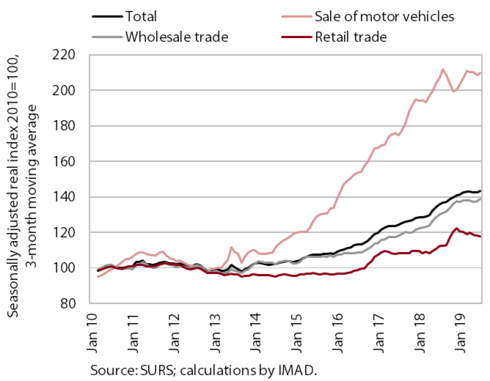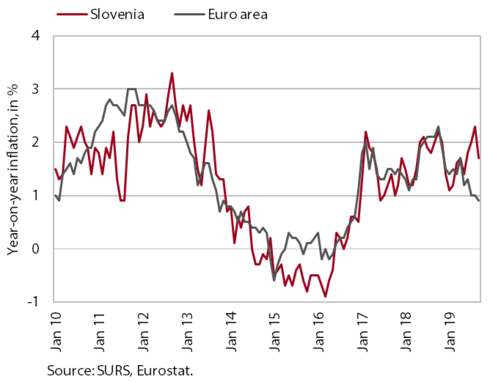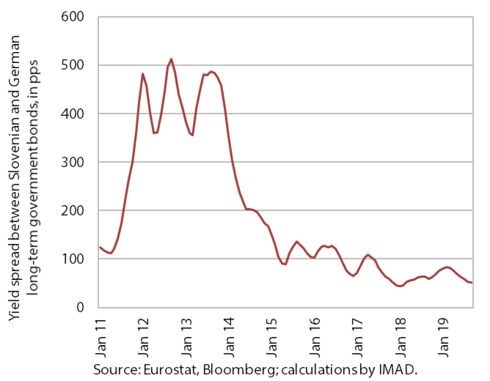Charts of the Week
Current economic trends from 30 September to 4 October 2019: trade, prices, bond yields
With further growth in household consumption, turnover in trade continued to rise in July. External factors are influencing the moderation of year-on-year growth in consumer prices. The ECB’s measures are contributing to a decline in government bond yields in most euro area countries, including Slovenia.
Trade, July 2019

After stagnation in the second quarter, turnover in trade increased in July. This was a consequence of turnover growth in wholesale trade and in some goods in retail trade, particularly those related to further growth in household consumption (food products, household appliances, telecommunication and computer equipment, medicines, products for personal care, sports equipment, etc.). Turnover growth in retail trade is otherwise significantly marked by motor fuel sales, which have been declining this year after the high growth rates seen at the end of 2018. Meanwhile, turnover in the sale of motor vehicles maintains its level from the beginning of the year, following the strong growth rates in the previous four years.
Prices, August 2019

After strengthening in the last few months, the year-on-year price growth slowed significantly in September. The growth of goods prices was notably lower, driven mainly by external factors in energy and food prices. Owing to lower average oil prices, the negative contribution of motor fuel prices strengthen further. The contribution of food prices was also lower (according to our estimate, largely due to month-on-month lower prices of fresh fruits). The growth of prices of consumer and semi-durable goods also slowed, while prices of durable goods were again lower year-on-year after August’s growth. The growth of prices of services, particularly those related to supplementary health insurance, housing, package holidays and hotels and restaurants, continues to strengthen amid solid household consumption. Service prices in the euro area are rising more slowly than in Slovenia, euro area inflation thus remaining lower than inflation in Slovenia.
Bond yields, Q3 2019

Yields to maturity of euro area government bonds dropped significantly again in the third quarter. This was to a great extent attributable to the additional package of monetary policy measures adopted by the ECB in the summer months, which contributed to a decline in government bond yields in most countries of the euro area. In the third quarter, the yield to maturity of the Slovenain bond fell to 0.0% (about 50 bps less than in the second quarter), while the spread in relation to the German bond (51 bps) narrowed.
